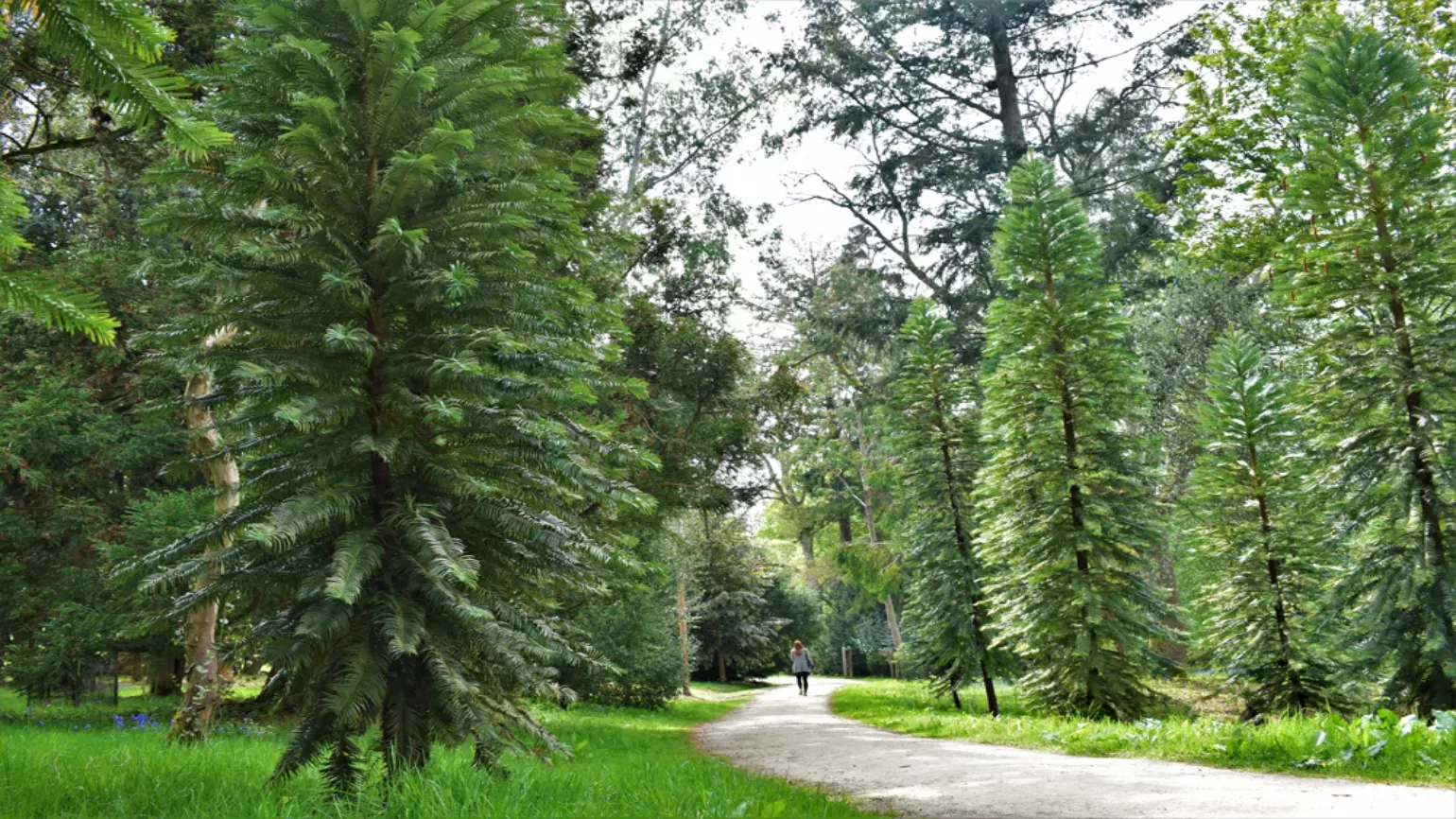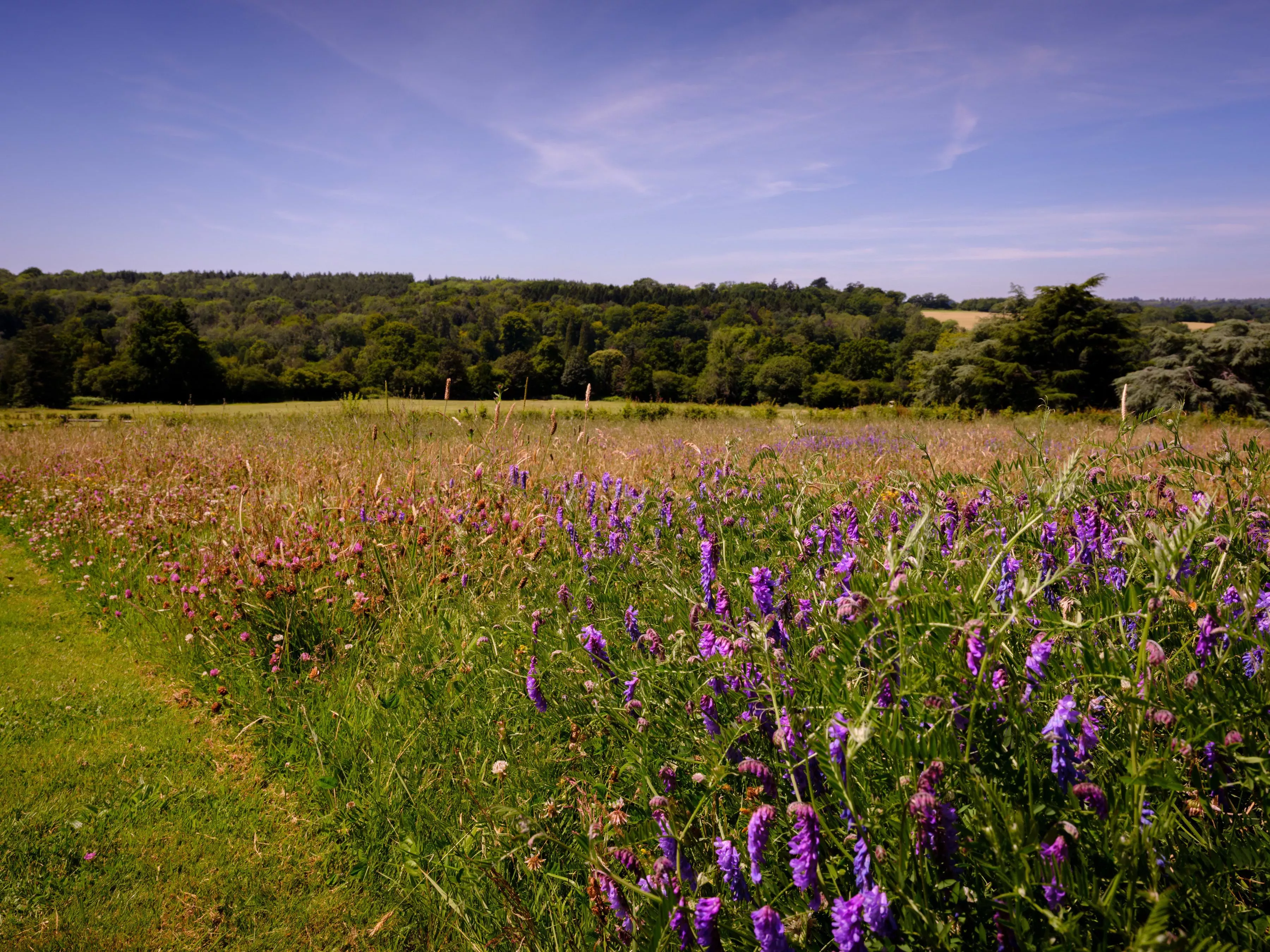22 July 2020
Walk the world at Wakehurst
Travel to countries across the globe through our beautiful landscapes and plants.

Fancy a trip around the world in one day? Our wild botanic garden in Sussex can offer just that, transporting you to distant lands, from Australia to South America.
Explore our vast gardens at Wakehurst that stretch across 500 acres, experiencing sights, smells, and sounds from botanic landscapes across the planet.
Our gardens are designed phytogeographically which means our plants are grouped together by their native country, so your globe-trotting can be done with ease.

Visit Australia
Explore the other side of the world in our stunning Coates Wood.
Within this atmospheric collection of trees from Australia and New Zealand, you’ll meet the unique Wollemi pine (Wollemia nobilis).
Known as a living fossil, this species was thought to be extinct until a small group was found growing in Australia’s Wollemi National Park in 1994.
These ancient trees have been around since the time of the dinosaurs.
Did you know? Wakehurst has 15 of the first Wollemi pines ever introduced to the UK, grown from the seed of the newly discovered wild specimens.
Look out for our other Australian trees, eucalyptus trees with their stripy bark and distinct menthol fragrance, and the beautiful southern beech trees (Nothofagus).


Visit South America
Continue strolling through Coates Wood to discover the woodlands of South America.
You won’t be able to miss our monkey puzzle trees (Araucaria araucana).
Notice their thick, pointy leaves that spiral along the branches.
Native to Chile and Argentina, this evergreen conifer has been around for a whopping 200 million years but was first introduced to England in 1850.
Can you guess why the tree was given its common English name? The Victorians thought the spiky leaves would puzzle a monkey trying to climb it.
Our monkey puzzles here at Wakehurst are an important living conservation resource. That's because the species’ seeds can’t survive drying or freezing so aren’t able to be stored in a seed bank.

Visit North America
Embark upon a North American adventure by visiting our Horsebridge Wood.
Our giant redwoods (Sequoiadendron giganteum) will give you a glimpse of the mighty redwood forests of California.
These amazing trees have many cool aspects – their bark is fire-resistant, they can live for over 3,000 years and they are the largest living organism on Earth.
The eagle-eyed will spot one of our special redwoods in this woodland, marked with a label. It was grown from seed collected from the second-largest tree in the world, General Grant, which stands at over 80 metres tall in California.

Want to travel more of the United States? Though it’s not flourishing quite yet, we are in the middle of creating a new American Prairie near the Mansion.
Our landscape of grasses and wildflowers, grown from wild-collected seeds, will help conserve the endangered prairies of North America, of which only 1% survives today.
Watch our animation below to see how our American Prairie will transform into the Atlantic coastal plains, central tallgrass prairies and the grasslands of the Pacific Northwest.
Head to the Pinetum for a taste of Mexico and see our Apache pine (Pinus engelmannii).
This conifer has extra-long needles and grows in Mexico, which is historically Apache Native American country, as its common name reflects.
Visit Asia
See one of our Asian highlights, the rare Vietnamese golden cypress (Xanthocyparis vietnamensis), discovered in Vietnam in 1999, growing near the Loder Valley Nature Reserve entrance.
Wander to the Water Gardens and check out the remarkable handkerchief tree (Davidia involucrata), native to China. It gets its name thanks to its white bracts that look like handkerchiefs in spring.
Trek across our Himalayan Glade and Westwood Valley to experience the Himalayas with their hilly terrain and plant life, including Asian Euphorbia, ginger lilies, rhododendrons, limes, magnolias, and maples.
Explore the trees and shrubs of East and Central Asia in our Asian Heath Garden.
Here, you can also take a look at our new Kyrgyzstan Trial Beds, set up to explore how we turn Kyrgyzstan’s meadow plant communities into garden design for the creation of our future Silk Road Steppe landscape.

Visit the Mediterranean
If you’re not jetting off to the balmy shores of the Mediterranean any time soon, then get a sense of the region in our gardens, at the border of the Asian Heath Garden.
Our Montpellier maple (Acer monspessulanum) from Italy is newly planted here with small, three-lobed leaves and winged seeds.

Have a staycation
For an experience closer to home, discover our beautiful native British plants and landscapes.
Our Coronation Meadow really comes alive in the summer months with its sea of native flowers and grasses.
Take a walk across Bloomers Valley and witness the abundance of spectacular local meadow species from saw wort (Serratula tinctoria) and betony (Stachys officinalis) to Dyers’ greenweed (Genista tinctoria).
Listen to the buzzing of pollinators and watch the swaying grasses and flowers to immerse yourself in this iconic British landscape.
So, come visit Wakehurst and pick up our new leaflet to guide you across the world in one day.




